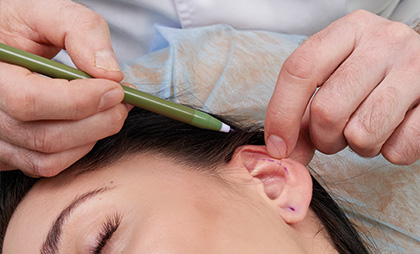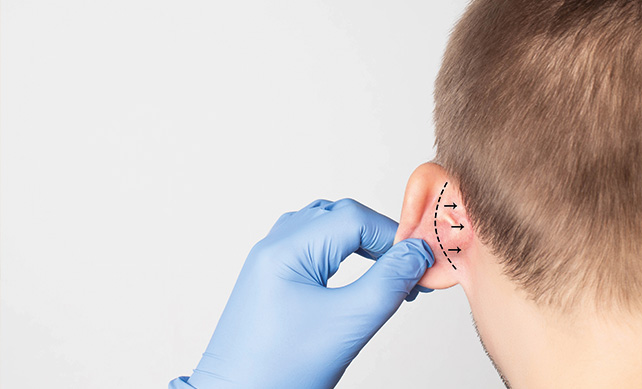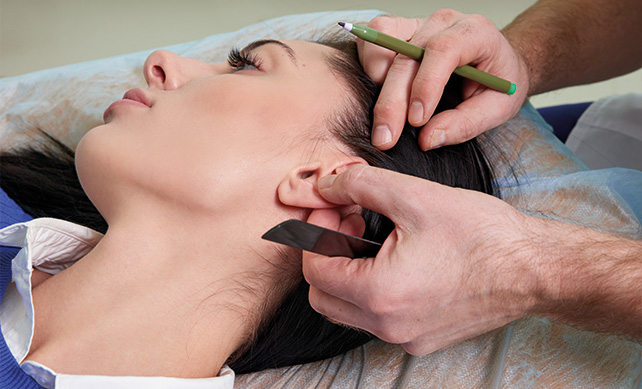What Is Ear Cosmetic Surgery
While most attention is typically directed towards facial features like the nose, eyes, and lips, ears play a crucial role in our overall appearance. Various ear shapes exist, including square, broad, and pointed ears. Cosmetic ear surgery, also known as otoplasty, is available to alter the shape of the ears according to individual preferences.
In Turkey, ear cosmetic surgery involves correcting deformities or irregularities in the ear structure. These deformities may include prominent or protruding ears, certain abnormalities leading to hearing impairment, or excessively large earlobes. Procedures such as ear pinning or reshaping of the ear cartilage can address these issues.
Typically performed on children aged 4 to 14, adults can also undergo this surgery successfully. The procedure lasts around 2 to 3 hours and is conducted under either local or general anesthesia. Recovery generally takes two to four weeks post-surgery.


Ear Cosmetic Surgery Techniques
There are two approaches to ear reshaping: surgical and non-surgical.
- In the surgical method, the doctor corrects ear defects by making an incision of appropriate size based on the patient’s needs.
- In the non-surgical method, the doctor reshapes the ear cartilage and tightens it using golden threads. A small incision is made behind the ear to allow the doctor to manipulate the cartilage and close the incision afterward.
Candidates For Ear Cosmetic Surgery
Conditions for pediatric ear surgery candidacy include:
- The child must be in good health, free from severe illnesses or persistent ear infections.
- Ear cartilage stability is necessary for surgical intervention.
- Cooperation and adherence to instructions are essential.
Criteria for adult ear surgery candidacy are as follows:
- Good overall health is paramount, with no significant illnesses or conditions that could impede recovery. Smoking is to be avoided.
- A clear understanding of the benefits of ear cosmetic surgery and its potential positive effects on both health and social well-being is necessary.
Pre-Operative Instructions For Ear Surgery
Some instructions that the patient must follow before the ear surgery to ensure the success of the surgery and get the desired results:
- Perform the necessary laboratory and medical tests before undergoing ear surgery.
- Take certain medications your doctor prescribes to ensure positive results during the procedure.
- Check your current medications with your doctor to ensure they do not cause any adverse effects during the surgery.
- Stop smoking before the operation.
- Avoid taking aspirin, specific NSAIDs, and herbal supplements because they cause severe bleeding.



Post-Operative For Ear Surgery
Following ear surgery, it’s crucial to adhere to several guidelines to prevent complications and ensure optimal healing:
- Adhere to the dressings recommended by your doctor to maintain wound cleanliness and safeguard against potential infections. These dressings also aid in supporting the new ear position post-surgery, typically for a minimum of three days.
- Plan to stay home for at least one week following the procedure.
- Strictly adhere to post-operative ear care instructions, including taking prescribed medications to minimize infection risks.
- Promptly contact your doctor if you experience any unusual side effects or complications.
- Avoid exposure to sunlight and harsh environmental conditions in the aftermath of ear surgery.
- Follow the recovery guidelines provided by your plastic surgeon to expedite healing and achieve favorable outcomes.
Ear Surgery Stages
There are three main steps involved in ear surgery:
- Anesthesia: This step involves administering either local or general anesthesia, depending on the patient’s specific needs and the recommendation of the doctor.
- Incision: During this stage, adjustments are made to correct prominent ears. This typically involves increasing the size of the inner fold of the ear while reducing the cartilage to create a more concave shape. Incisions are usually made behind the ear, although sometimes they may be placed within the folds inside the ear for better concealment.
- Closure: After the necessary adjustments are made, the surgical incisions are closed using external medical stitches placed on the back of the ear to minimize visible scarring.



